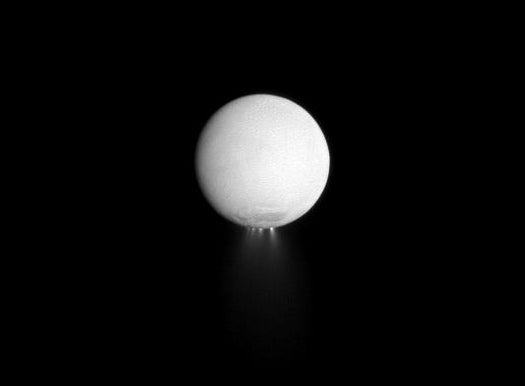Enceladus is Raining on Saturn, Altering the Planet’s Chemistry
Fourteen years ago, astronomers studying Saturn via ESA’s Infrared Space Observatory discovered a mysterious supply of gaseous water in Saturn’s...

Fourteen years ago, astronomers studying Saturn via ESA’s Infrared Space Observatory discovered a mysterious supply of gaseous water in Saturn’s upper atmosphere. Now, ESA’s Herschel observatory has figured out exactly where that water is coming from: Saturn’s moon Enceladus, which spews water onto its host planet via huge water jets emanating from its southern polar region.
That makes Enceladus the only moon in our solar system to actively influence the chemistry of its parent planet, defining a new kind of relationship between host planet and satellite.
Enceladus is a veritable water machine, jetting some 550 pounds of water vapor into space every second. Some of this falls back on the moon itself. Most is lost to space or freezes in Saturn’s rings. But it so happens that between three and five percent falls into a huge donut-shaped torus around Saturn–yet another ring or sorts for the already ring-rich planet.
Perhaps more significantly, it shows how a moon can influence the chemical composition of its parent planet, raising some interesting possibilities in the realm of planet formation in our solar system and elsewhere in the universe. After all, the slight amount of water vapor that makes it into Saturn’s upper atmosphere spawns other oxygen-bearing compounds like carbon dioxide. Could a volcanically active moon potentially seed a previously inhabitable rocky parent planet with the proper ingredients for life? It’s fun to think about, anyhow.